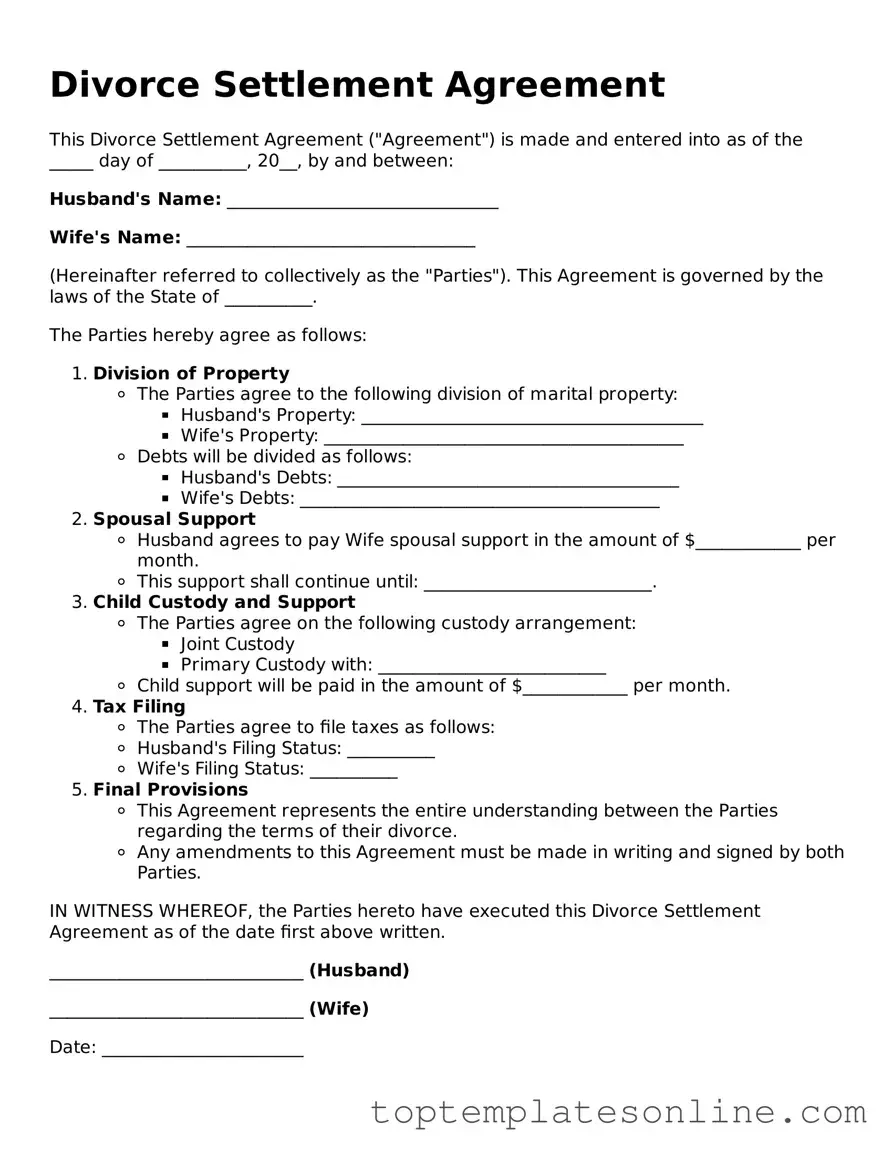Attorney-Approved Divorce Settlement Agreement Form
The Divorce Settlement Agreement form is a legal document that outlines the terms and conditions agreed upon by both parties during a divorce. This agreement addresses various aspects such as property division, child custody, and financial support. By formalizing these arrangements, the form helps to ensure clarity and minimize future disputes between the parties involved.
Customize Divorce Settlement Agreement Here
